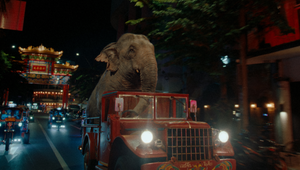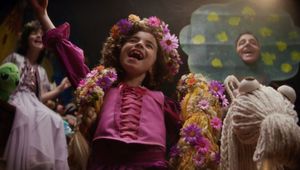
When Untold Studios Took BMW Under the Sea

An octopus dancing away in the depths of the ocean – that is how the unconventional BMW spot draws attention. Only later in the film do you come to understand that the script is an elaborate metaphor for the control unit, what BMW calls the ‘Heart of Joy’.
Creating that fluid motion in the octopus’ movement and taking the audience under the sea came with its complications. Creative director of animation at Untold Studios, Tim van Hussen, says, “Once in a while, you get the opportunity to work on something that’s never been done before. That usually comes with a wonderful mix of fear and excitement, because everyone is hungry for the challenge, but everyone is also thinking, ‘Can we pull this off?’ BMW ‘Octowaltz’ has been up there for sure.”
The production crew travelled to Cape Town for the clear ocean and the rich flora and fauna. Director Diarmid Harrison-Murray wanted the spot to be completely live-action, outside of the CGI octopus and the eel. “I like to bring in a little bit of that chaos of real-life stuff and the imperfections. The best CG projects have live action in them.”
Shooting Under the Sea
However, shooting in the ocean presents its own set of difficulties. Because the sea was full of seaweed – ideal for the aesthetic, but not ideal for Diarmid – the director had to rely heavily on his camera operators. “Because the guys are diving down in this forest of seaweed, they can't run a cable, right? So you don't have a live feed. So, I would brief the divers, and then they would go down for between 15 minutes and 30 minutes, after which they would come up. Then we take the card out, look at it, and we're like, 'Oh no, I was kind of thinking this,' and go back down again. So that was definitely outside of my comfort zone.”
Diarmid was intentional with his instructions. “I wanted it to start off like a documentary feel, but then I wanted the camerawork to feel a bit more like a ballroom dancing scene.” But control underwater is a tricky thing. “A lot of it worked out, and when they didn’t get what they imagined, they got something different.”
Underwater Meets CGI
The production and post-production team worked closely to create the underwater octopus illusion. With a quick turnaround starting, the team had all hands on deck to deliver the project within four months.
Creative director Tim van Hussen explains that tentacles are typically very challenging to get right in visual effects due to the need for extreme detail and articulation in their movements. “They are all muscle and take about any shape. And octopi can squeeze themselves into any hole that’s bigger than their beak – the only hard part of their body. So that’s just a basic octopus. Then the creature needs to form the silhouette of two dancers, gracefully waltzing on the seabed. Oh, and then do a medley of different dance styles, before shooting out of the water like a rocket. But of course, all in ways that are physically plausible in an underwater scene.”
Breaking the work down into manageable tasks, among dozens of artists, was the VFX team's strategic way of tackling the challenges head-on. “There was a healthy dose of fear. To solve that, we did what the British do best (although our VFX team is from all around the world): Keep calm, and carry on.”
Bringing the Octopus to Life
The director, Diarmid, and the VFX team worked a lot on finding the right look for the octopus.
The team began by delving into a vast collection of reference images. Another Untold creative director Tom Raynor says, “It quickly became obvious that no two octopuses are alike.” In the end, they blended characteristic features from several references to craft the ideal version of our octopus.
He further explains: “Creating an engaging and appealing character was key. We went through several iterations, refining details like eye size and tentacle thickness.”
While it was intended to resemble reality, the Untold Studios team also wanted it to have a unique personality. Diarmid says finding the balance in the octopus design was close to the journey the octopus goes through in the film. There is a scene in the spot where he’s “proud of himself or showing off his new abilities, and then develops this ridiculous belief that actually, he didn't need to even stay in the sea. The sky was the limit. You go too far and it's a cartoon. You don't go far enough, and it’s a boring octopus. So you want to add some character without stepping too far from Mother Nature.”
Creating the music was a bit like a chicken-or-egg situation, Diarmid says. “We wanted it to sync with the performance of the octopus.” So, composer Max Perryment had to work with the team and tweak the classic waltz track regularly until it all fit together. “Everything has a knock-on effect. When you put it all together, it was a real puzzle.”
No Risk, No Fun
This project was a challenging one, not only because of the taxing production and post-production process, but also because – unlike many car ads – it only showcases the actual product at the very end. With this spot, production company Untold Studios, creative agency Jung von Matt, and the BMW team took a risk together. But a risk that paid off nonetheless. With over 11 million views on YouTube, the spot is garnering attention.
Creative director Tom Raynor concludes: “Not gonna lie, it was hard work. Most projects come with at least some easy wins, but this one didn’t. This meant that the last few weeks became very rewarding, as I saw all the hard work paying off, and the collaborative effort from the whole team became so much more than the sum of its parts.
“The creative idea underpinning this campaign was extremely brave, bold, and completely unique, and we feel extremely lucky to have been a part of this journey.”















